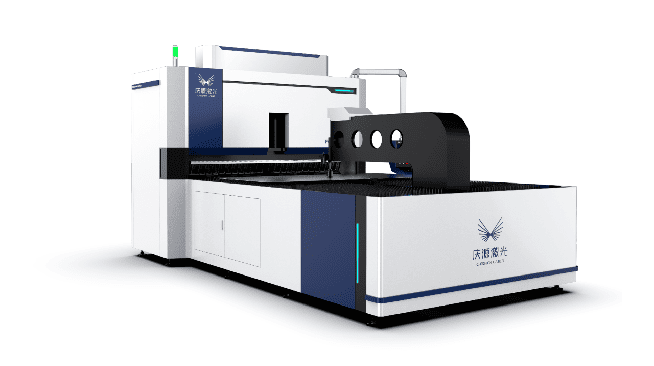
CNC Hydraulic Press Brake
Cheeron Laser is an innovative company that knows how to build quality machines. They specialize in creating CNC Hydraulic Press Brakes that will make any job easier, faster, and more reliable. These machines are an essential part of any workshop that demands precision in the bending of metal sheets. With the Cheeron Laser brand, you’re getting state-of-the-art technology that will take your fabrication to the next level. CNC Hydraulic Press Brakes put you in complete control of bends and angles to ensure that your metal projects come out perfectly. Cheeron Laser is the company you can trust to build a CNC Hydraulic Press Brake that will last for years and provide great performance.
Product Introduction
CNC Hydraulic Press Brake Bending Machine
Bending machine is an important type of sheet metal processing machine, which is a machine tool for bending sheet metal from 2D plane to 3D workpiece.
Bending machine infrastructure
Backstop classification
CNC axis :
3+1: Y1, Y2, X + crowning
4+1: Y1,Y2, X, R + crowning
6+1: Y1,Y2, X, R, Z1, Z2 + crowning
8+1:Y1,Y2,X1,X2,R1,R2,Z1,Z2 + crowning
Y1,Y2: Oil cylinders on the 2 sides
X: backgauge front and back movement
R: backgauge up and down movement
Z1, Z2: 2 fingers left and right movement.
CNC Hydraulic Press Brake Video
Why Choose Us
- Professional design team provides customized services
- Production line with strict control process
- Fine processing technology
- Can meet the electrical standards of different countries
- Arrange on-site installation, commissioning, training, maintenance and other services within 7 days
- Trial operation will be carried out before delivery to ensure that the goods can be operated normally when they arrive at the customer
- Remote video guidance service available
Customer Site
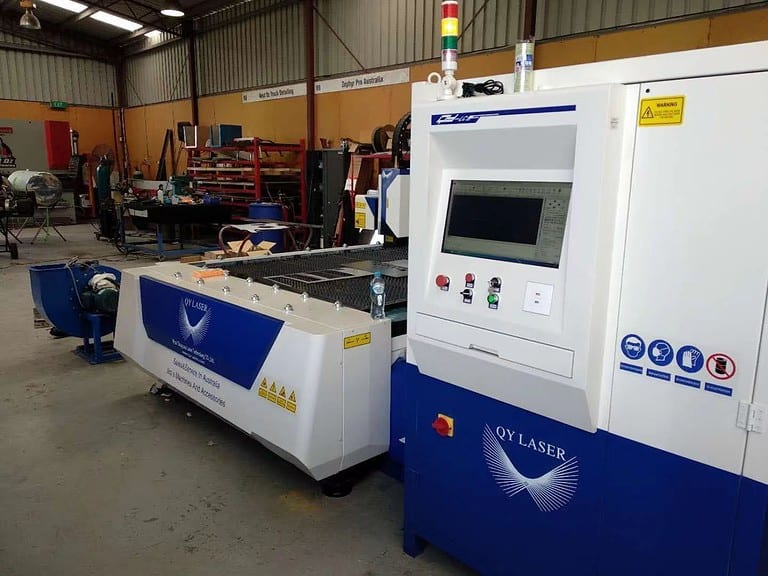
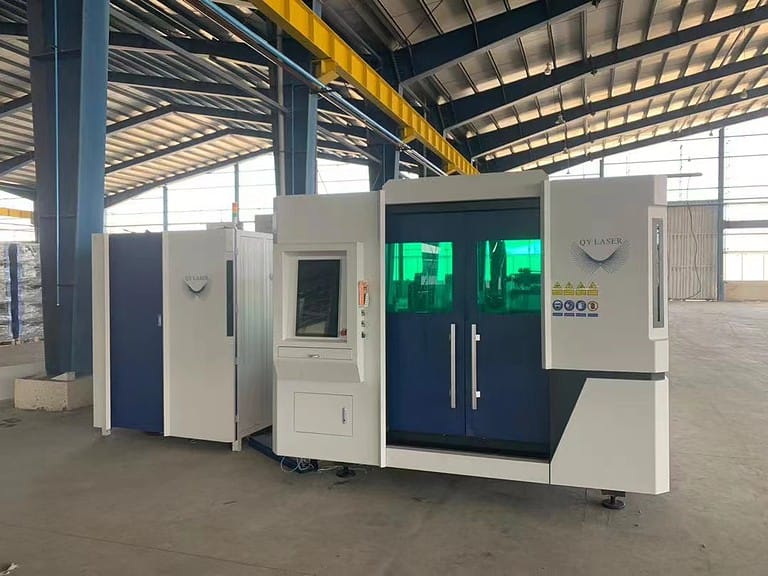
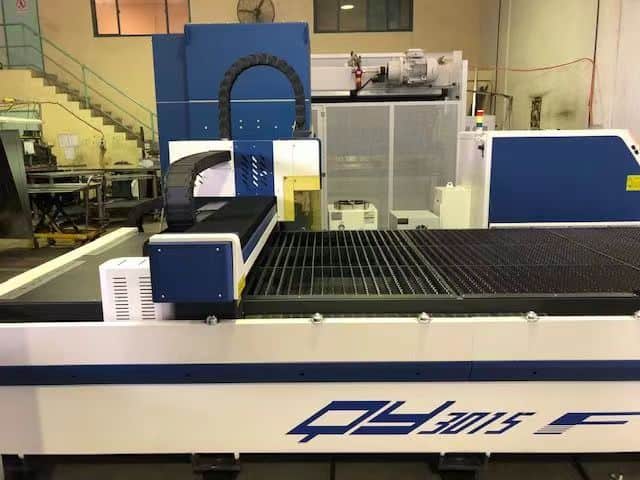
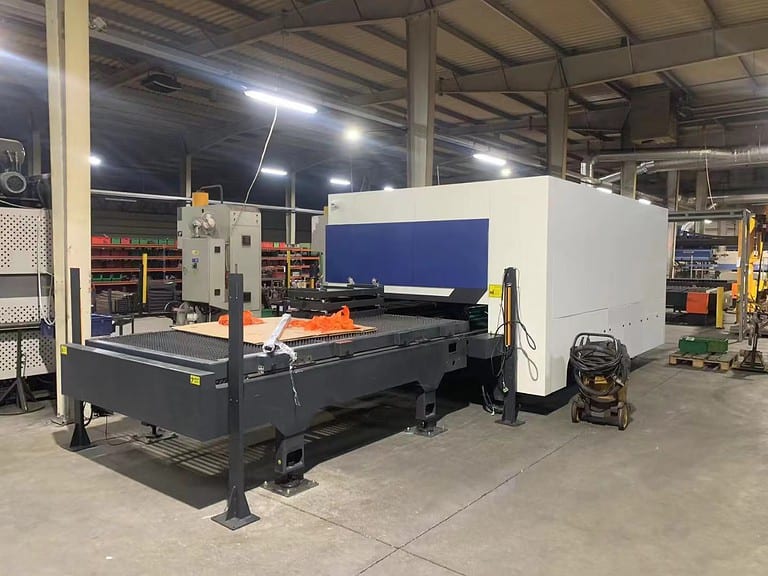

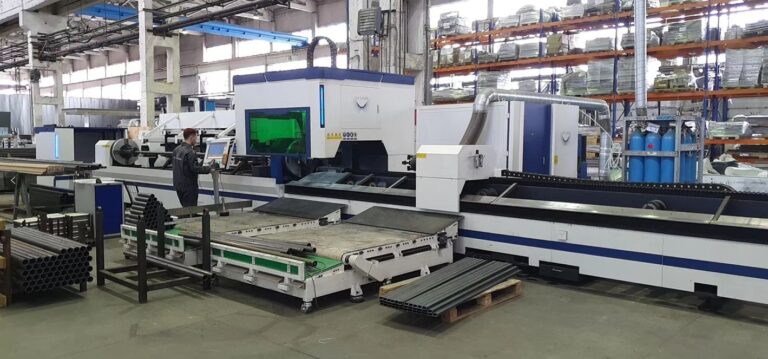
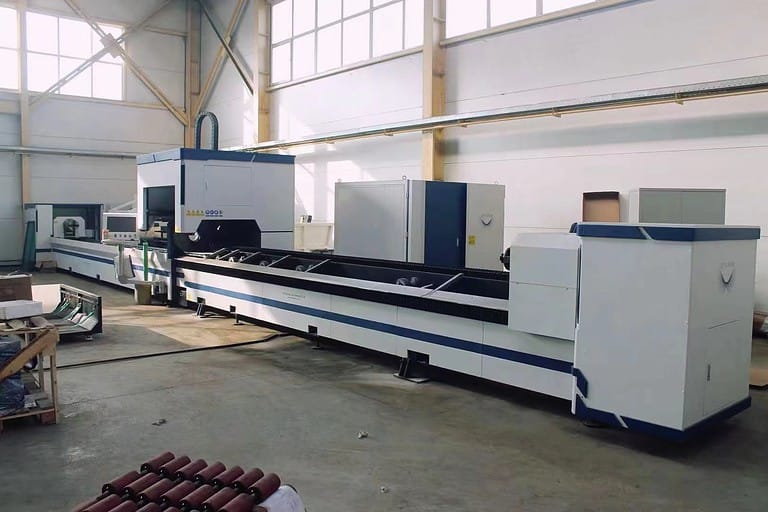
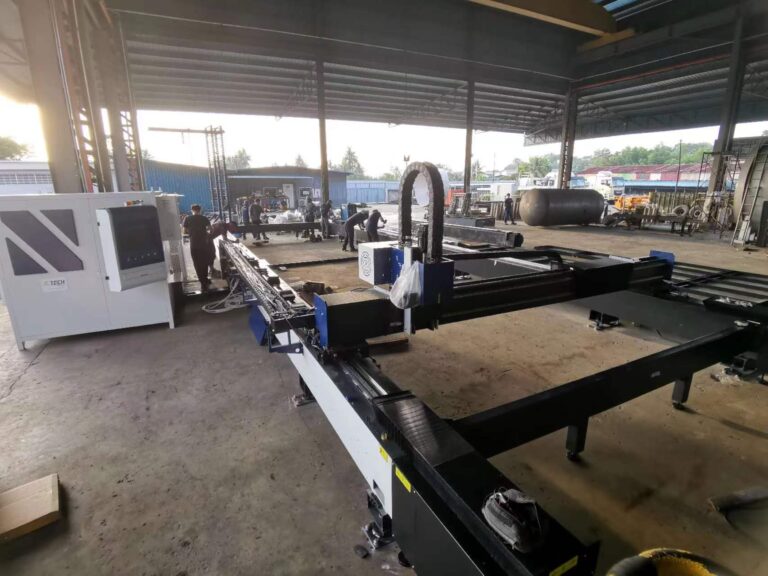
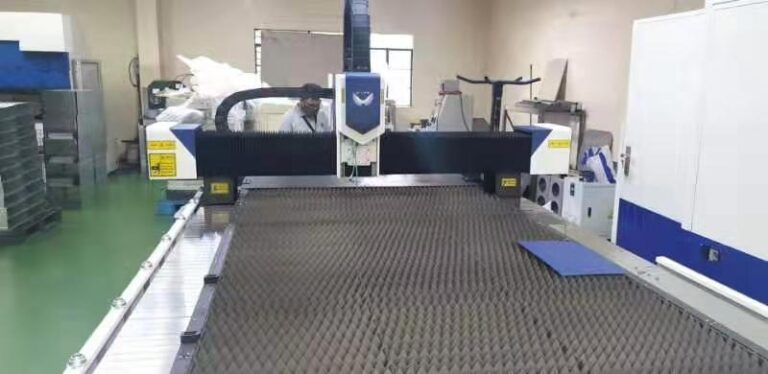
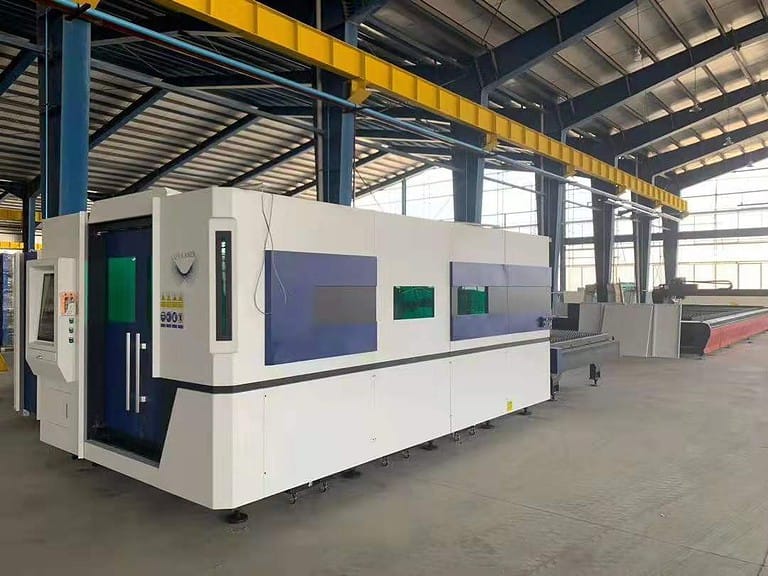

Machine Delivery
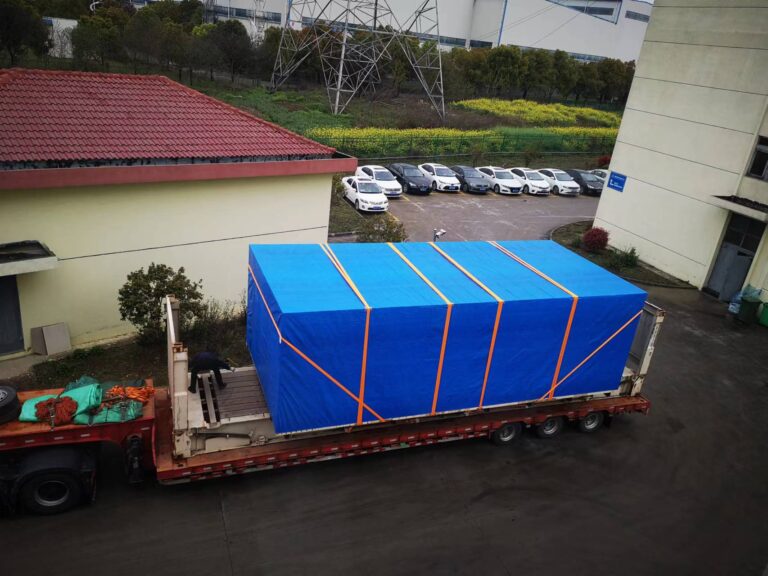



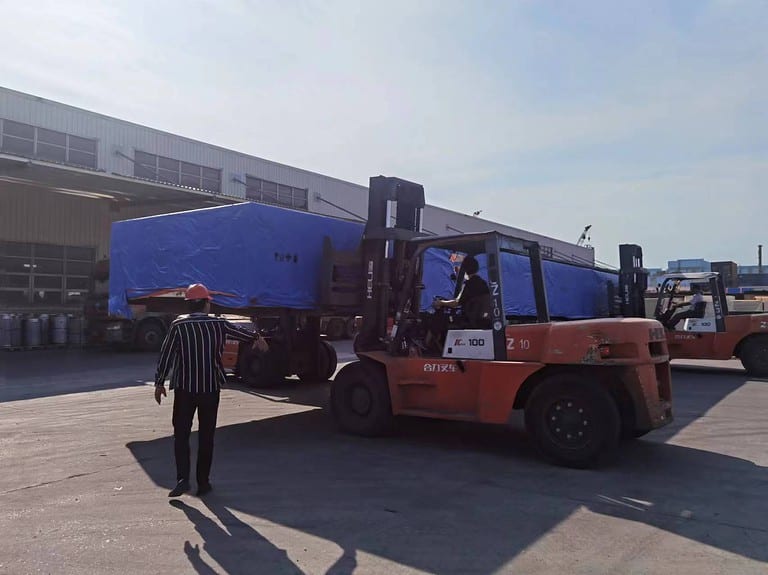
Mastering the Mechanics: A Complete Guide to Hydraulic Press Brakes
Meta Description: Dive into the world of hydraulic press brakes with our comprehensive guide. Learn about their workings, benefits, applications, maintenance, and more to enhance your understanding and decision-making in the machine industry.
Introduction
Hydraulic press brakes are a vital component in modern manufacturing, known for their unparalleled precision and efficiency in metal forming. This guide explores the nuances of these powerful machines, illuminating their operational mechanisms, advantages, and their critical role in shaping today’s manufacturing landscape.
What is a Hydraulic Press Brake and How does it Work?
A hydraulic press brake is an essential machine in metalworking, designed to bend and shape metal sheets into specific forms with high precision. The core of its operation lies in the use of hydraulic cylinders, which are the driving force behind the machine’s bending capabilities. Here’s a more detailed explanation:
- Hydraulic Cylinders: These are the primary components of the press brake. They generate force through the pressurization of hydraulic fluid. When the operator activates the press brake, the hydraulic pump pressurizes the fluid, leading to the movement of the cylinders.
- Controlled Pressure Application: The key to the hydraulic press brake’s functionality is the controlled application of pressure. By regulating the amount of hydraulic fluid and its pressure, the machine can exert a precise amount of force on the metal sheet. This precise control enables the creation of accurate bends at specific angles.
- Die and Punch Mechanism: The metal sheet is placed between a die and a punch. The hydraulic pressure moves the punch, which then forces the metal sheet into the die, creating the bend. The shapes of the die and punch determine the angle and radius of the bend.
- Versatility in Metalworking: Due to its ability to apply controlled force, a hydraulic press brake can handle a range of metal thicknesses and types. This makes it a versatile tool in various metalworking applications, from small precision components to large metal sheets.
- Precision and Repeatability: One of the standout features of hydraulic press brakes is their precision. The exact control over pressure and movement allows for consistent and repeatable bends, which is crucial in mass production and high-quality metal fabrication.
- Adjustability and Customization: Modern hydraulic press brakes come with advanced features like CNC (Computer Numerical Control) systems, which allow for high levels of adjustability and customization. Operators can program the machine for complex bending sequences, further enhancing its utility and efficiency in diverse metalworking tasks.
The hydraulic press brake is a powerful and precise tool in the realm of metal fabrication. Its ability to apply controlled force through hydraulic cylinders, combined with the versatility offered by its die and punch mechanism, makes it an indispensable machine for creating detailed and consistent metal shapes and forms.
What are the Key Components of a Hydraulic Press Brake?
The key components of a hydraulic press brake are critical to its functionality and precision in metal forming tasks. Each part plays a vital role in ensuring the machine operates efficiently and accurately:
- Hydraulic Cylinders: These are the heart of the press brake, responsible for generating the necessary pressing force. Hydraulic cylinders work by converting the hydraulic energy into mechanical force, enabling the machine to bend and shape metal sheets with great power and precision.
- Control System: This component acts as the brain of the press brake. Modern hydraulic press brakes often use sophisticated control systems, including CNC (Computer Numerical Control) technology, to manage operations. This system allows for precise control over bending angles and depth, ensuring consistent and accurate results. It also enables the storage of operation patterns for repetitive tasks, enhancing efficiency and reducing manual input errors.
- Die and Punch: These are the tooling parts that come into direct contact with the metal. The punch is a sharp-edged tool that is pressed into the metal, while the die is the surface over which the metal is bent. The shape and size of the die and punch determine the angle and radius of the bend. They are typically made from hardened steel to withstand the stress of bending and can be changed depending on the specific requirements of the task.
- Backgauge: This component is crucial for positioning the metal sheet accurately before bending. The backgauge holds the workpiece in place and ensures it is aligned correctly, allowing for precise bends. In advanced models, the backgauge can be programmed to move automatically, adjusting for different bend locations and sequences, which is particularly useful for complex bending operations.
- Frame: The frame of a hydraulic press brake provides the necessary structural support to withstand the high forces involved in the bending process. It is typically constructed from heavy-duty steel to ensure stability and durability. A robust frame is essential to maintain the alignment and precision of the machine over time, especially during high-force bending operations.
Each of these components works in tandem to ensure the hydraulic press brake functions efficiently, safely, and accurately, making it an indispensable tool in metalworking industries.
What are the Benefits of Hydraulic Brakes?
Hydraulic press brakes are renowned for their exceptional capabilities in the machining industry, primarily due to their high precision, enhanced safety, and versatility.
- High Precision: These machines are capable of producing extremely accurate bends, with a high degree of repeatability. This precision is crucial in industries where exact measurements are imperative, such as aerospace and automotive manufacturing. The control systems in hydraulic press brakes allow for fine adjustments, ensuring that each bend is as accurate as the last.
- Enhanced Safety: Hydraulic press brakes are equipped with various safety mechanisms, such as light curtains, safety stops, and emergency shut-off features. These safety components are designed to protect operators from potential accidents, making the hydraulic press brake a safer option compared to other types of press brakes.
- Versatility: One of the standout features of hydraulic press brakes is their adaptability to handle different types and thicknesses of metals. This versatility is achieved through adjustable settings and customizable tooling options, enabling the machine to work efficiently with a wide range of materials, from thin sheets to thick metal plates. This adaptability makes hydraulic press brakes a valuable asset in diverse manufacturing settings.
Where are Hydraulic Press Brakes Used?
Hydraulic press brakes are crucial in several industries due to their precision and power in shaping metal sheets.
- Automotive Industry:
They are used for bending and forming various vehicle components, including body panels and frame parts. This capability is essential for manufacturing cars, trucks, and other vehicles, where precision and strength are paramount.
- Construction:
In the construction sector, hydraulic press brakes play a vital role in fabricating metal building materials such as beams, frames, and roofing elements. Their ability to handle heavy and large metal sheets makes them indispensable for creating robust and durable structures.
- Aerospace:
For the aerospace industry, these machines are used to fabricate critical aircraft parts. The need for extremely precise and reliable components in aircraft manufacturing makes hydraulic press brakes a go-to solution for shaping aluminum, titanium, and other aerospace-grade materials.
What Materials Can a Hydraulic Press Brake Handle?
Hydraulic press brakes are remarkably versatile in handling a range of materials, primarily suited for metal forming. Here’s a brief elaboration:
- Various Metals:
- Steel: Known for its strength and durability, steel is a common choice for heavy-duty applications.
- Aluminum: Lighter and more malleable, ideal for applications requiring lower weight.
- Alloys: Such as stainless steel or brass, which offer unique properties like corrosion resistance or enhanced strength.
- Thickness Range:
The ability of a hydraulic press brake to handle different thicknesses largely depends on its capacity. They can typically bend:
- Thin sheets: Suitable for intricate, precision work.
- Heavy plates: For more robust, structural components.
The capacity to work with these materials makes hydraulic press brakes indispensable in various industries, from automotive to aerospace, where different metals and thicknesses are required. However, the specific limitations of each machine in terms of material thickness and type should always be considered to ensure optimal performance and safety.
How Much Does a Hydraulic Press Brake Cost? (include factors)
The cost of a hydraulic press brake typically ranges from $20,000 to over $100,000. This wide price range is influenced by several key factors:
- Size and Capacity: Larger machines capable of handling bigger or thicker materials are more costly. The increased material and manufacturing requirements for larger machines contribute to this higher price.
- Brand and Quality: Well-known brands with a reputation for reliability and durability often have higher price tags. These costs reflect the brand’s research and development efforts, the quality of materials used, and the assurance of after-sales support.
- Features: Advanced features, such as CNC (Computer Numerical Control) systems for precision bending, add to the cost. These systems provide greater control and flexibility, leading to increased efficiency but also a higher initial investment.
These factors combined determine the final price, making it crucial for buyers to evaluate their specific needs and budget constraints when selecting a hydraulic press brake.
How Much Does Regular Maintenance of a Hydraulic Press Brake Cost?
The regular maintenance cost of a hydraulic press brake can vary widely based on the machine’s size, usage, and the specific service requirements. However, as a general estimate, businesses can expect to spend between $500 to $3,000 annually on maintenance. This cost estimation includes:
- Part Replacements ($200 – $1,000): This includes replacing wear-and-tear parts like seals and hydraulic fluids. The cost depends on the quality and type of parts needed.
- Regular Inspections ($100 – $500): Scheduled checks are crucial for operational safety and efficiency. These inspections can identify potential issues before they escalate into costly repairs.
- Labor Costs ($200 – $1,500): The cost for professional servicing and repairs. This varies based on local labor rates and the complexity of the service required.
It’s important to note that these figures are approximate and can change based on the machine’s condition, frequency of use, and the specifics of the maintenance contract with the service provider. Regular, professional maintenance is key to extending the lifespan of the equipment and ensuring optimal performance.
How Do Hydraulic Forces Enable Bending in a Press Brake?
Hydraulic forces in a press brake enable precise bending through the following mechanisms:
- Pressure Generation: A hydraulic pump creates pressure in the hydraulic fluid, which is then transmitted uniformly throughout the system.
- Controlled Force Application: This pressure acts on hydraulic cylinders, converting the fluid pressure into mechanical force.
- Adjustable Intensity: The amount of force exerted can be finely controlled, allowing for adjustments in the bending process to accommodate different materials and thicknesses.
- Uniform Pressure Distribution: The hydraulic system ensures that the pressure is distributed evenly across the length of the punch, resulting in uniform bends.
- Precision and Repeatability: Due to the controlled nature of hydraulic forces, press brakes can achieve highly precise bends, with consistent results across multiple operations.
This controlled, adjustable, and uniform application of force is key to the high levels of accuracy and repeatability in bending operations performed by hydraulic press brakes.
How is Bending Executed in a Hydraulic Press Brake?
Bending in a hydraulic press brake is a precise process that involves several key steps:
- Setting the Machine:
- Adjusting the Backgauge: This controls where the bend will occur on the metal sheet.
- Selecting the Appropriate Tooling: Dies and punches are chosen based on the desired bend angle and material thickness.
- Positioning the Metal:
- Aligning the Sheet: The metal is placed against the backgauge to ensure it’s bent at the correct location.
- Activating the Press:
- Applying Hydraulic Force: The hydraulic cylinders activate, applying force to the metal.
- Bending Over the Die: The metal is pressed into the die by the punch, creating the bend.
Each of these steps is crucial for achieving a precise and accurate bend in the metal, leveraging the power and control of the hydraulic system.
What are the Stages of Operation of a Hydraulic Press Brake?
The operation of a hydraulic press brake involves several critical stages to ensure efficiency and accuracy:
- Preparation: This initial stage is vital for a successful bending operation. It includes:
- Machine setup: Adjusting settings like pressure, angle, and the backgauge position according to the job requirements.
- Material preparation: Selecting and positioning the metal sheet properly for bending.
- Bending Process: The core stage where the actual bending of the metal occurs.
- Engaging the press: Activating the hydraulic system to move the punch and die, which shapes the metal.
- Monitoring: Observing the bending process for consistency and precision.
- Quality Checks: The final, yet crucial phase ensures the finished product meets the desired specifications.
- Measurement and inspection: Comparing the bent metal against design requirements for accuracy.
- Adjustments if necessary: Making any needed tweaks to achieve the perfect bend.
Each of these stages plays a significant role in the overall effectiveness and accuracy of the hydraulic press brake operation.
How Does a Hydraulic Press Brake Differ from Other Press Brakes?
Hydraulic press brakes differ from their mechanical and pneumatic counterparts primarily due to their advanced control systems and versatility. Here’s a brief elaboration:
- Greater Precision and Control: Hydraulic press brakes use fluid dynamics, which allows for smoother and more precise control over the bending process. This results in more accurate bends, especially for complex shapes or delicate materials.
- Higher Versatility in Handling Different Materials: The adjustability of pressure and speed in hydraulic systems makes them suitable for a wide range of materials, from thin sheets to thick plates, without compromising on accuracy or quality of the bend.
- Improved Safety Features: Hydraulic press brakes often come with better safety mechanisms. Their control systems allow for more precise operation, reducing the risk of accidents. Additionally, they tend to have built-in safety features like emergency stops and guards.
Which is Better: Press Brake or Hydraulic Press?
The decision between a press brake and a hydraulic press hinges on the specific requirements of the task at hand:
- Press Brake:
- Precision Bending: Ideal for detailed and precise bending operations.
- Complex Shapes: Suited for creating complex or intricate bends in metal sheets.
- Controlled Force Application: Offers more control over the bending process, allowing for consistency in production.
- Hydraulic Press:
- Versatile Pressing Tasks: More suitable for a wide range of pressing tasks beyond just bending, like stamping, crushing, or forming.
- Higher Force Capacity: Generally capable of exerting greater force, which is beneficial for heavier and larger-scale operations.
- Simpler Operations: Typically simpler in operation, making them suitable for tasks that don’t require the precision of a press brake.
Choose press brakes for high-precision and controlled bending of metals, and opt for a hydraulic press when dealing with a variety of pressing tasks that require higher force and less precision.
What are the Advantages and Disadvantages of a Hydraulic Press Brake?
Hydraulic press brakes are highly valued in the metal fabrication industry for their distinct advantages and some inherent drawbacks.
Advantages:
- Precision: They offer unparalleled accuracy in bending and shaping, critical for complex designs and consistent production.
- Versatility: Capable of handling various materials and thicknesses, they are adaptable to a wide range of applications.
- Enhanced Safety Features: Modern hydraulic press brakes come equipped with advanced safety mechanisms, reducing the risk of accidents and ensuring operator safety.
Disadvantages:
- Higher Initial Cost: The advanced technology and robust build quality of hydraulic press brakes often result in a higher upfront investment compared to other types of press brakes.
- More Complex Maintenance Requirements: Due to their intricate hydraulic systems, they demand more specialized and frequent maintenance, potentially leading to higher long-term operational costs.
While hydraulic press brakes offer superior precision and safety, they require a significant initial investment and ongoing maintenance, factors that must be considered when deciding on their use in manufacturing settings.
How to Build and Maintain a Hydraulic Press Brake?
Building a hydraulic press brake requires meticulous attention to detail. Start by following the manufacturer’s guidelines for assembly, ensuring that each component is correctly installed and secured. This involves aligning the hydraulic cylinders, setting up the control system, and assembling the frame.
Once the press brake is operational, regular maintenance is essential for its longevity and optimal performance. Here are key maintenance tasks:
- Regular Inspections: Periodically inspect the machine for signs of wear, loose components, or damage. This helps identify issues early.
- Fluid Changes: Maintain the hydraulic system by changing the hydraulic fluid according to the manufacturer’s recommendations. Fresh fluid ensures smooth operation.
- Cleanliness: Keep the machine clean to prevent debris from affecting its performance. Regularly clean the components, including the die and punch.
By following these steps and paying attention to maintenance, you can ensure that your hydraulic press brake operates efficiently and has a longer lifespan, reducing downtime and maintenance costs.
What are the Main Factors to Consider When Buying a Hydraulic Press Brake?
When investing in a hydraulic press brake, several critical factors must be taken into account to ensure that your purchase aligns with your operational requirements and long-term goals. Here’s an elaboration on the main factors to consider:
- Size and Capacity: The physical dimensions and bending capacity of the hydraulic press brake should be your foremost consideration. Evaluate the size of the workpieces you intend to bend and choose a machine that can accommodate them comfortably. Additionally, assess the thickness and type of materials you’ll be working with, as this will dictate the required tonnage of the press brake. It’s essential to strike a balance between having a machine that meets your current needs and one that allows for future expansion.
- Reputation of the Brand: The reputation of the manufacturer plays a pivotal role in the reliability and quality of the hydraulic press brake. Research and seek feedback from industry peers to identify reputable brands known for producing durable and dependable machinery. A well-established brand is more likely to provide excellent customer support, spare parts availability, and a track record of innovation and technological advancements.
- Additional Features like CNC Control Systems: The inclusion of advanced features, such as CNC (Computer Numerical Control) systems, can significantly enhance the efficiency and precision of your hydraulic press brake. Consider whether your operations require automation, precision control, and the ability to execute complex bending sequences. CNC control systems allow for programmability, reducing setup times and minimizing errors. While these features may come at an additional cost, they can lead to substantial long-term benefits in terms of productivity and product quality.
By carefully evaluating these factors and their alignment with your specific operational needs, you can make an informed decision when purchasing a hydraulic press brake, ensuring that it not only meets your immediate requirements but also contributes to the growth and success of your manufacturing endeavors.
Conclusion
Hydraulic press brakes stand as pillars of excellence in the field of metal fabrication, delivering unparalleled precision and efficiency to manufacturing processes. This guide has served as a comprehensive resource, laying the groundwork for a profound understanding of their intricate workings, the manifold benefits they bring to the table, and the critical aspects of their maintenance. Armed with this knowledge, industry professionals are empowered to navigate the market, make well-informed decisions, and harness the full potential of hydraulic press brakes to drive innovation and productivity in their operations. As these remarkable machines continue to evolve and adapt to the demands of modern industry, they remain at the forefront of metal shaping and fabrication, proving their indispensable role in the manufacturing landscape.





